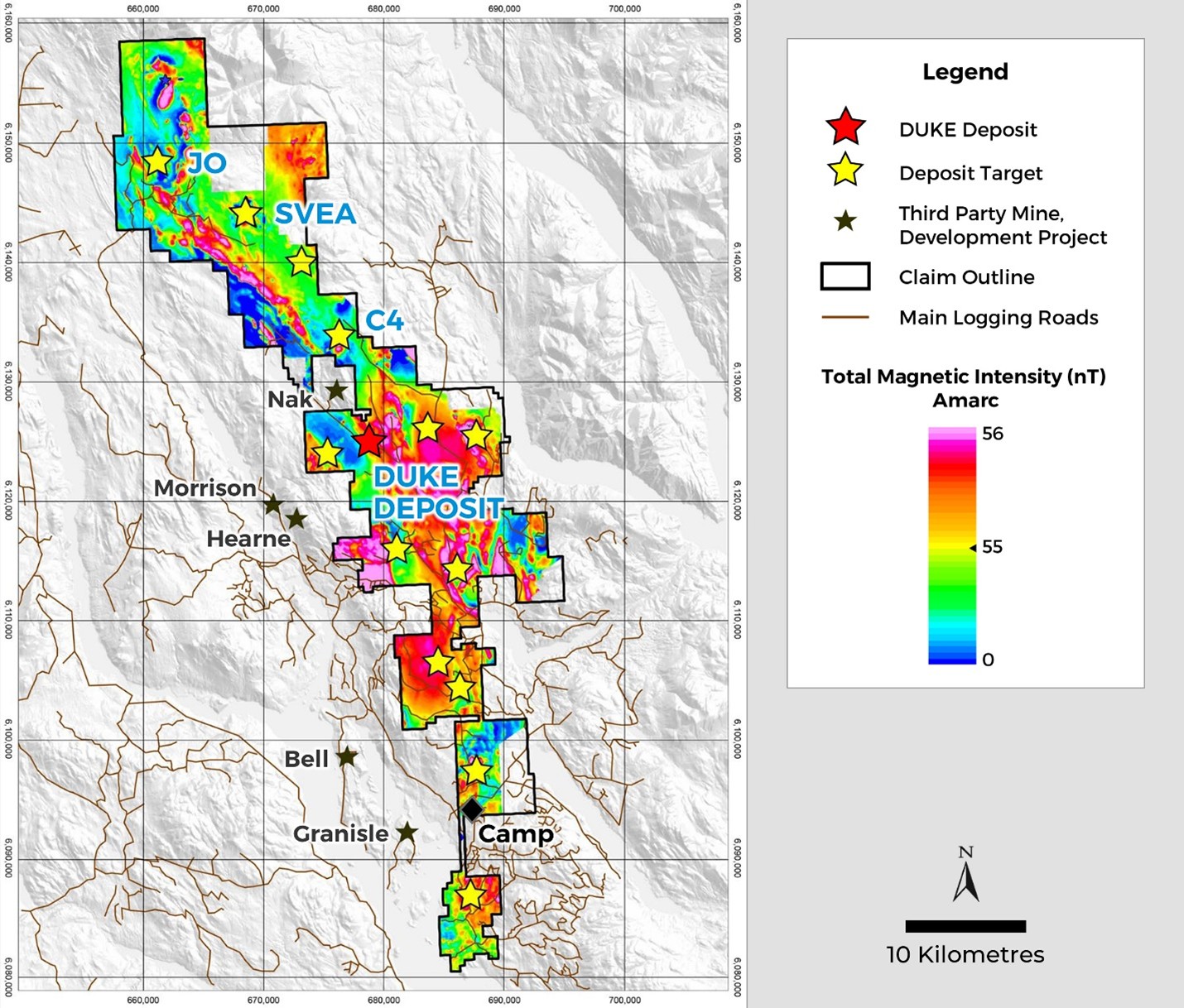While well known for its Cu-Au prospectivity, the Babine Region is relatively underexplored due to its widespread, shallow glacial cover.
To better understand the geological setting and its potential to host additional deposits, Amarc completed a comprehensive compilation of government and historical data over the entire Babine Region. This integrated study provided a new interpretation of the geological, geochemical and geophysical characteristics of the Babine, identifying multiple previously unrecognized, high potential porphyry Cu-Au deposit targets.
Prospective deposit target areas were selected for 2023 field assessment. A combination of extensive airborne magnetic geophysical and LiDAR[1] surveys, together with ground Induced Polarization (IP) geophysical, soils geochemistry and geological mapping surveys were undertaken, defining multiple deposit targets for drill testing.
In 2024, a program of initial scout drilling (5,815 m in 19 holes) testing of three of the pipeline Cu-Au deposit targets across the prospective Cu-Au District was completed as well as 121 line-km of ground IP and airborne geophysical surveys to delineate targets for future drill testing (July 2, 2024 release). The initial drilling at the JO, C4 and Svea targets identified prospective mineralized environments. Defining the scale of higher-grade mineralization within these permissive environments will be the focus of the 2025 drill programs at these and similar targets across the District.
[1] LiDAR (Light Detection And Ranging) uses laser pulses to calculate distances, capture precise measurements and measure ranges to create 3D information about a specific area and its characteristics.

 DUKE District – Comprehensive Exploration Surveys Delineated Multiple New Porphyry Cu-Au Targets
DUKE District – Comprehensive Exploration Surveys Delineated Multiple New Porphyry Cu-Au Targets